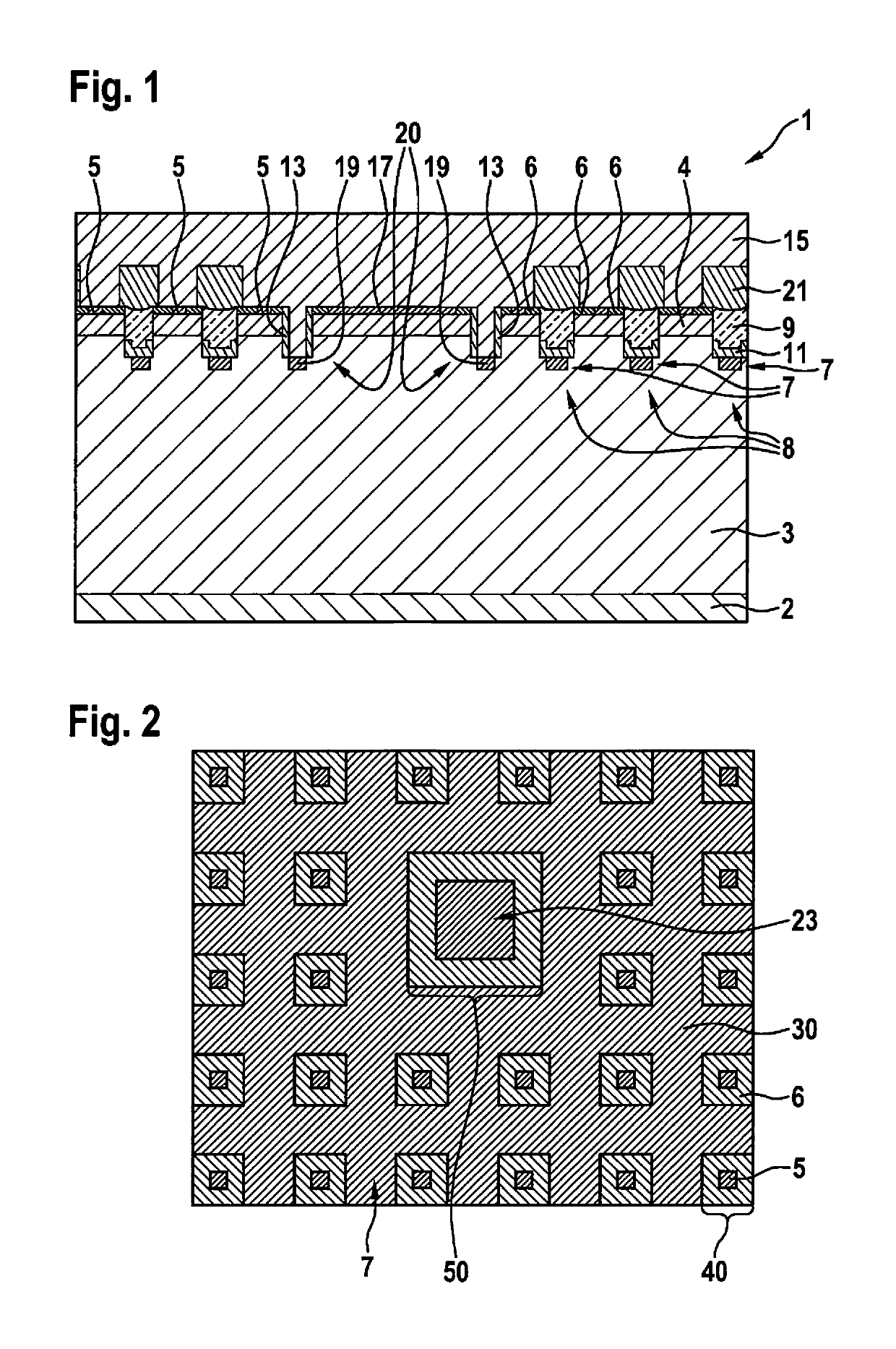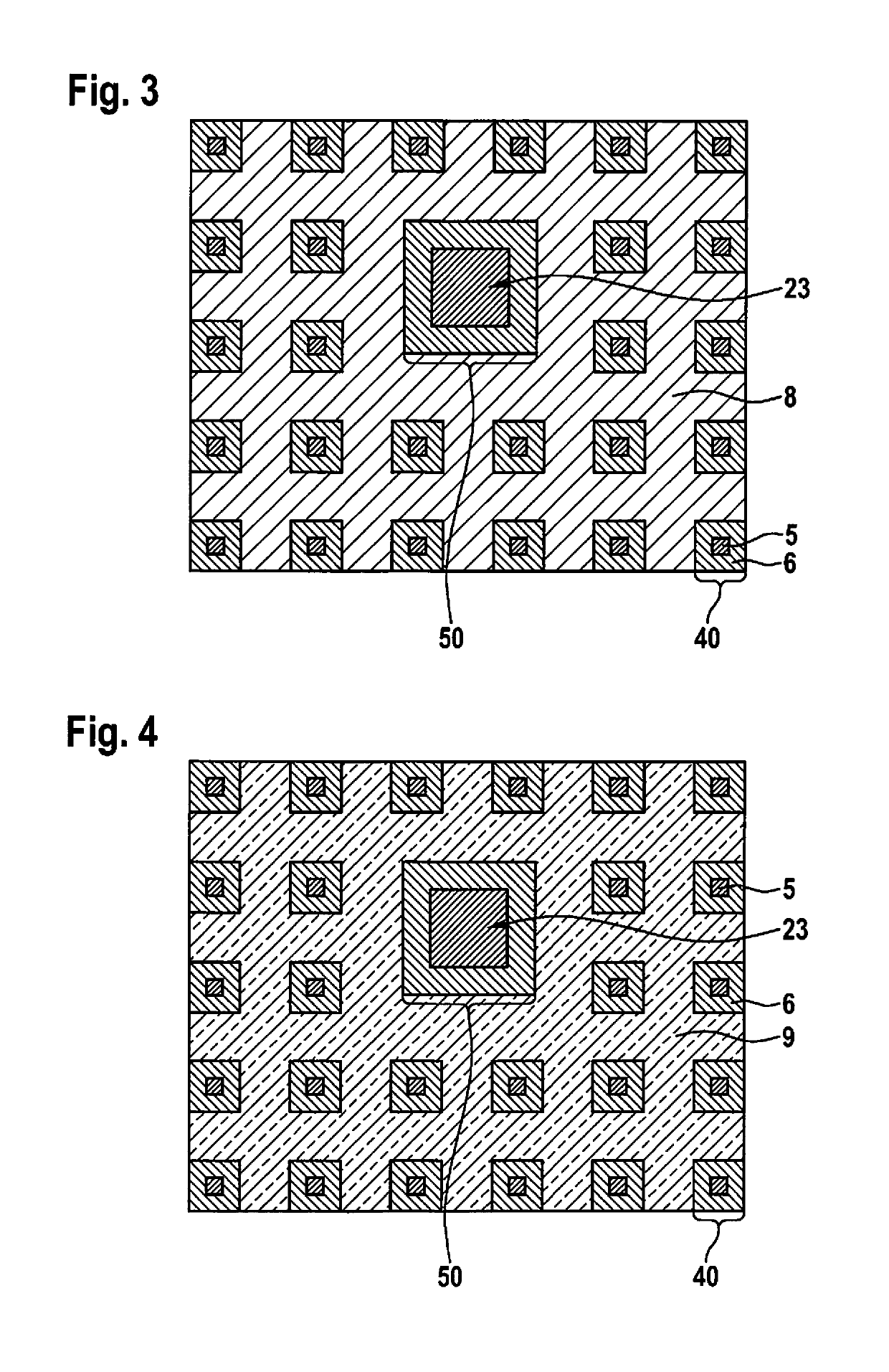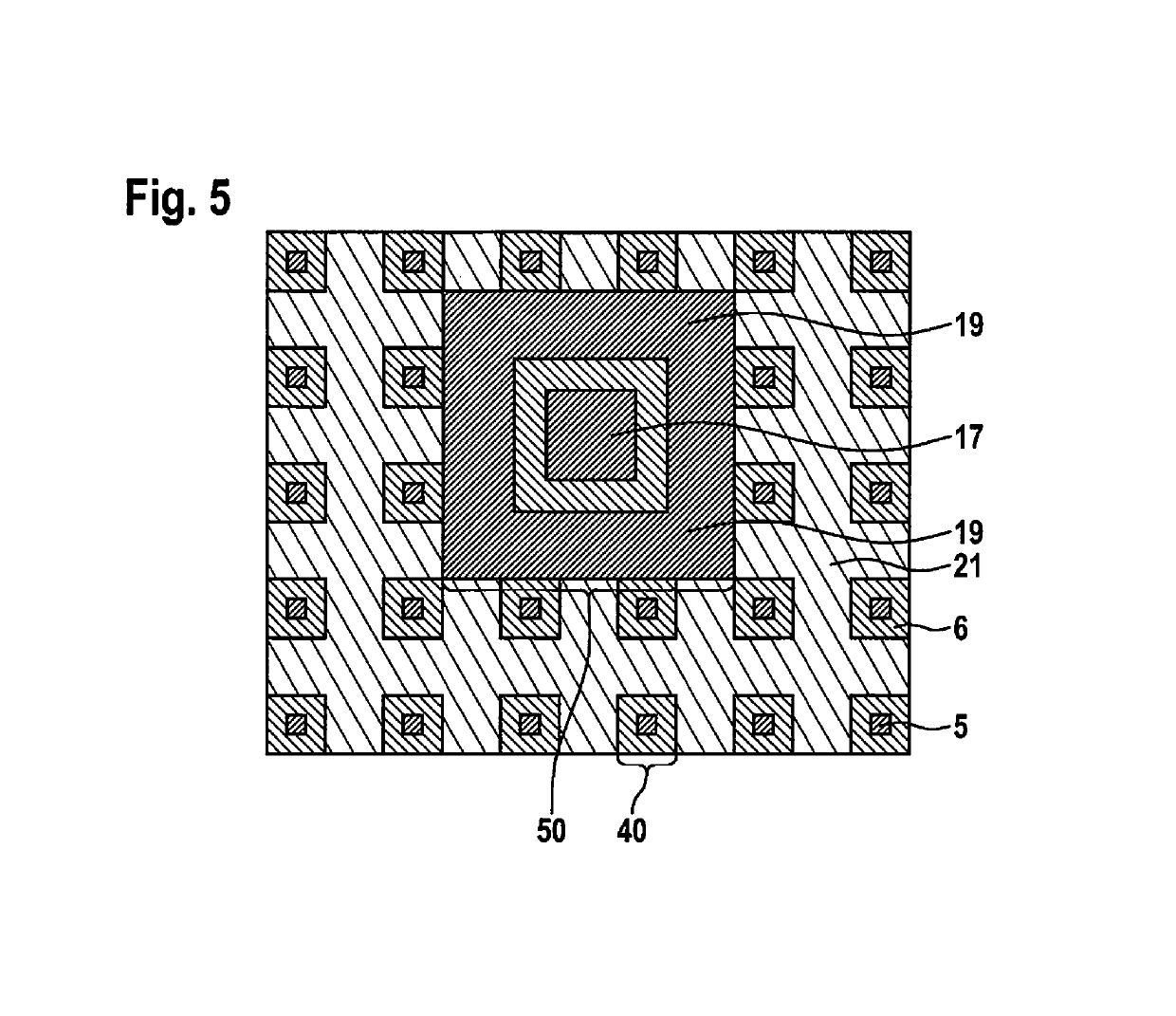Semiconductor transistor having superlattice structures
a semiconductor and superlattice technology, applied in the field of transistors, can solve the problems of low forward power loss, marked deterioration of switching behavior, low forward resistance, etc., and achieve the effect of reducing the pitch measurement of the transistor, increasing the channel width per surface area, and increasing the current carrying capacity of the transistor
- Summary
- Abstract
- Description
- Claims
- Application Information
AI Technical Summary
Benefits of technology
Problems solved by technology
Method used
Image
Examples
Embodiment Construction
[0025]FIG. 1 shows a transistor 1 according to the present invention, by way of example a trench MOSFET transistor 1, as a lateral view according to a first exemplary embodiment. Transistor 1 shows a layer sequence of a semiconductor material, preferably of silicon carbide (SiC). The lowest layer is formed by a substrate 2 of a first doping type, which typically functions as a drain terminal (metallic contact not drawn). It is followed by an epitaxy layer 3 of the first doping type and a channel layer 4, situated above this epitaxy layer 3, of a second doping type that differs from the first doping type. Furthermore, a plurality of trenches 8 is inserted through channel layer 4 into epitaxy layer 3. In these trenches 8 there is a gate electrode 9, which may be contacted separately. Gate electrode 9 is covered by a gate insulator (not drawn), which electrically insulates gate electrode 9 from the surroundings. An oxide is typically used as gate insulator. Typically, polysilicon is us...
PUM
 Login to View More
Login to View More Abstract
Description
Claims
Application Information
 Login to View More
Login to View More - R&D
- Intellectual Property
- Life Sciences
- Materials
- Tech Scout
- Unparalleled Data Quality
- Higher Quality Content
- 60% Fewer Hallucinations
Browse by: Latest US Patents, China's latest patents, Technical Efficacy Thesaurus, Application Domain, Technology Topic, Popular Technical Reports.
© 2025 PatSnap. All rights reserved.Legal|Privacy policy|Modern Slavery Act Transparency Statement|Sitemap|About US| Contact US: help@patsnap.com



